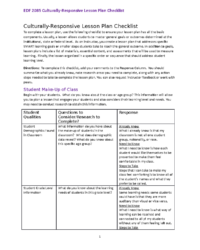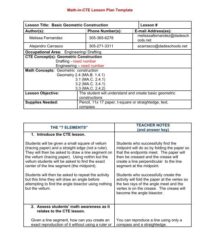Number Talks are incredibly powerful short routines designed to help students develop computational fluency, number sense, and a deeper understanding of mathematical concepts. Far more than just solving problems, these brief, focused conversations encourage students to share their thinking, listen to others strategies, and refine their own mathematical reasoning. They foster a classroom environment where all voices are valued and mistakes are seen as opportunities for learning.
However, like any effective instructional strategy, successful Number Talks dont just happen. They require thoughtful planning, clear objectives, and a structured approach to facilitation. This is precisely where a well-designed number talk lesson plan template becomes an invaluable tool for educators, streamlining preparation and ensuring that every session maximizes its learning potential.
Crafting Your Ideal Number Talk Session: Key Components
A truly effective Number Talk isn’t simply about presenting a math problem and asking for answers. It’s a carefully orchestrated sequence of steps that guides students through observation, articulation, and justification of their mathematical thinking. The magic lies in the student discourse that unfolds, and a robust structure ensures this discourse is productive and insightful.
Understanding the essential components that make up a successful Number Talk allows educators to move beyond improvisation and towards intentional, impactful instruction. When you have a clear roadmap for each session, you can focus more on listening to your students and less on what comes next.
Think of it as setting the stage for a rich mathematical conversation. From the moment the problem is presented to the final wrap-up, each phase plays a crucial role in deepening student understanding and fostering their confidence as mathematicians.
By organizing your thoughts and materials within a consistent framework, you ensure all critical elements are addressed, leading to more focused and beneficial sessions for both you and your students.
Setting the Stage: Preparation is Key
- Choosing the Problem: Select a problem that is accessible yet challenging, allowing for multiple solution strategies. Consider the mathematical objective for the day or week.
- Anticipating Strategies: Before the talk, think about the different ways students might solve the problem. This helps you prepare to listen effectively and guide the discussion.
- Preparing Materials: Decide on your recording method (whiteboard, document camera, digital display). Ensure it’s clear and allows for documentation of student thinking.
Facilitating the Discussion: Guiding Student Thinking
- Presentation and Wait Time: Clearly present the problem. Provide ample “think time” for students to mentally solve and formulate their initial strategies.
- Individual Thinking and Hand Signals: Encourage students to show a signal (like a thumb up at their chest) when they have a strategy, then a second finger for a second strategy, and so on. This keeps all students engaged.
- Sharing Strategies: Call on students to share their thinking. Encourage them to explain their process step-by-step.
- Documentation: Carefully record student strategies exactly as they describe them. This validates their thinking and provides a visual reference for others.
- Revoicing and Clarifying: Rephrase student explanations in clear mathematical language when necessary, without taking over their ideas. Ask clarifying questions.
- Connecting Strategies: Guide the conversation to highlight connections between different strategies. “How is John’s way similar to Sarah’s?”
- Wrap-Up: Briefly summarize key mathematical ideas or efficient strategies explored during the talk.
Benefits of Using a Structured Number Talk Approach
Adopting a structured number talk lesson plan template brings a wealth of advantages, not just for the students but for the educators leading these sessions as well. For teachers, it acts as a consistent guide, reducing planning time and ensuring that every session contributes meaningfully to the students’ mathematical journey. It removes the guesswork and allows you to focus your energy on the dynamic interactions within the classroom.
Beyond the practical advantages, a structured approach significantly amplifies the educational impact. When Number Talks are consistently well-executed, students develop a stronger command of numbers, grow more confident in articulating their mathematical reasoning, and become more adept at understanding and critiquing the logic of others. It transforms mathematical learning from a series of isolated problems into an interconnected web of understanding.
Ultimately, the consistent application of a well-thought-out plan fosters a predictable yet exciting routine in the classroom. This predictability lowers anxiety for students, encouraging them to take risks and engage more deeply with the mathematical content, knowing that their contributions will be heard and valued.
- Develops computational fluency and efficiency with numbers.
- Encourages rich mathematical discourse and communication skills.
- Builds number sense and flexible thinking strategies.
- Fosters a growth mindset by valuing all solution paths.
- Provides immediate, formative assessment opportunities for teachers.
- Enhances listening skills and the ability to understand diverse perspectives.
- Reduces math anxiety and increases student confidence.
Implementing structured Number Talks using a clear template empowers educators to create a vibrant, inquiry-based math classroom where students truly become mathematical thinkers. This strategic approach ensures that every precious minute spent on these routines yields maximum benefit, cultivating not just computational skills but also deep conceptual understanding and a genuine love for mathematics.
By making these powerful, brief sessions a consistent part of your daily routine, you are setting the stage for remarkable growth in your students mathematical abilities and confidence. The ripple effect of these short, focused discussions will be evident throughout their learning, making mathematics a more accessible and engaging subject for everyone.


